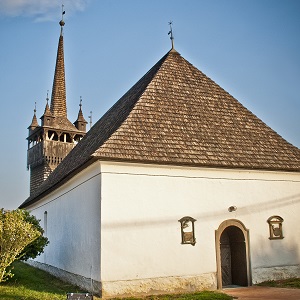A project uniting 11 partners from 8 Central European countries supports rural development by boosting cultural tourism and contributes to the sustainable preservation of religious cultural heritage.
- 19 December 2014
Our small church community is very proud to be part of the THETRIS Transnational Church Route. Our village worked for decades to preserve our special Baroque church and now, thanks to international marketing provided by THETRIS, the number of visitors to our village has significantly increased.
In order to exploit the potential of medieval churches and local religious monuments, the THETRIS project – short for THEmatic Transnational church Route development with the Involvement of local Society – analysed the strengths and weaknesses of the participating regions and developed strategies for preserving and promoting the churches. Local and regional pilot actions were then combined into a transnational church route that links all project partners in a common effort to promote their activities. The route features 61 churches or religious monuments from 6 different denominations.
Transnational exchange of experiences through pilot actions
The analysis of the potential of the participating regions revealed similar strengths and weaknesses. The strong points, generally the richness of cultural heritage, the presence of strong local ties and traditions, and the beauty of the region’s landscape, were often counteracted by poor marketing strategies and low quality tourist information services, a shortness of heritage funding, and lack of awareness and engagement by the local population. Seven local pilot actions have been implemented that seek to address these weaknesses in a variety of ways.
For instance, the Association of Municipalities in the Upper Tisza Area, Hungary, settled on modern technology and developed a GPS-based pocket guide application. The diocese Graz-Seckau in Austria also went for ICT with an application linked with QR codes installed in selected churches in the region, while the province of Turin, Italy, developed a revitalisation package with measures that could be used in different regions of central Europe.
Transferring expertise
The transferability of the experiences is one of the main elements of the project, which aims to become a model for other regions. This is why experiences and best practices are shared in seminars, encouraging the use of the economic potential of cultural heritage.
Total investment and EU funding
Total investment for the project “THETRIS: THEmatic Transnational church Route development with the Involvement of local Society” is EUR 1 509 856 with the EU’s European Regional Development Fund (ERDF) contributing EUR 1 214 923 through the “CENTRAL EUROPE” Operational Programme for the 2007-2013 programming period.

